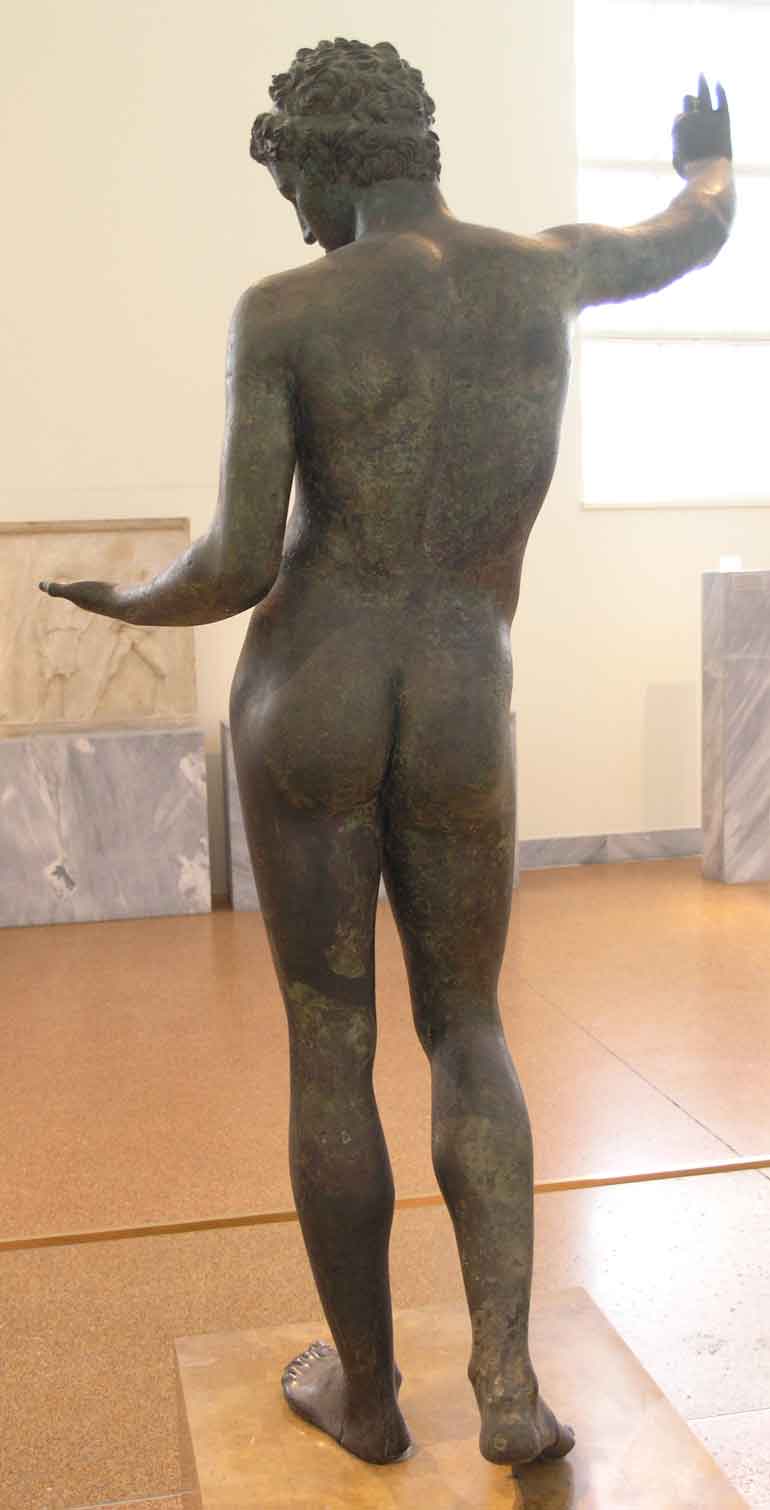Despite what the photographer says on the video, there is no clear line between art and pornography, because there have always been painters whose primary goal was to titillate, and because sexuality is part of our humanity. It cannot be simply excised from the model or the process.
Consider the dancing girls in this fragment from ancient Thebes (c. 1350 BC). One presumes that the serving girls and dancers are naked for Nabamun’s amusement in the afterlife, but it is not overtly sexual.
 |
|
A feast for Nebamun, the top half of a scene from the tomb-chapel of Nebamun, Thebes, Egypt, Late 18th Dynasty, around 1350 BC, The British Museum
|
Compare that to the Ephebe of Marathon, which is a sculpture of a boy (perhaps the god Hermes). The school of Praxiteles was interested in presenting a new view of the gods: more accessible, naturalistic, humanistic. These sculptors were perhaps even more interested in the aesthetic issues of contrapposto, which basically means putting the model’s weight on one foot. (This is a convention we use to this day.) I can’t even figure out how to frame the question of whether the Ephebe was intended to be erotic; their social, religious, and cultural milieu didn’t make the same distinctions we do.
 |
|
Ephebe of Marathon, School of Praxiteles, c. 325-300 BCE, National Archaeological Museum of Athens
|
Then there’s Da Vinci’s Vitruvian Man (which in addition to being an exquisite drawing, has to be one of the most enduring bits of graphic design in the history of art). Here, I think the intention is quite clear: Da Vinci is attempting to write a canon of measurement for the human body.
 |
|
Vitruvian Man, Leonardo da Vinci, c. 1490, Gallerie dell’Accademia
|

